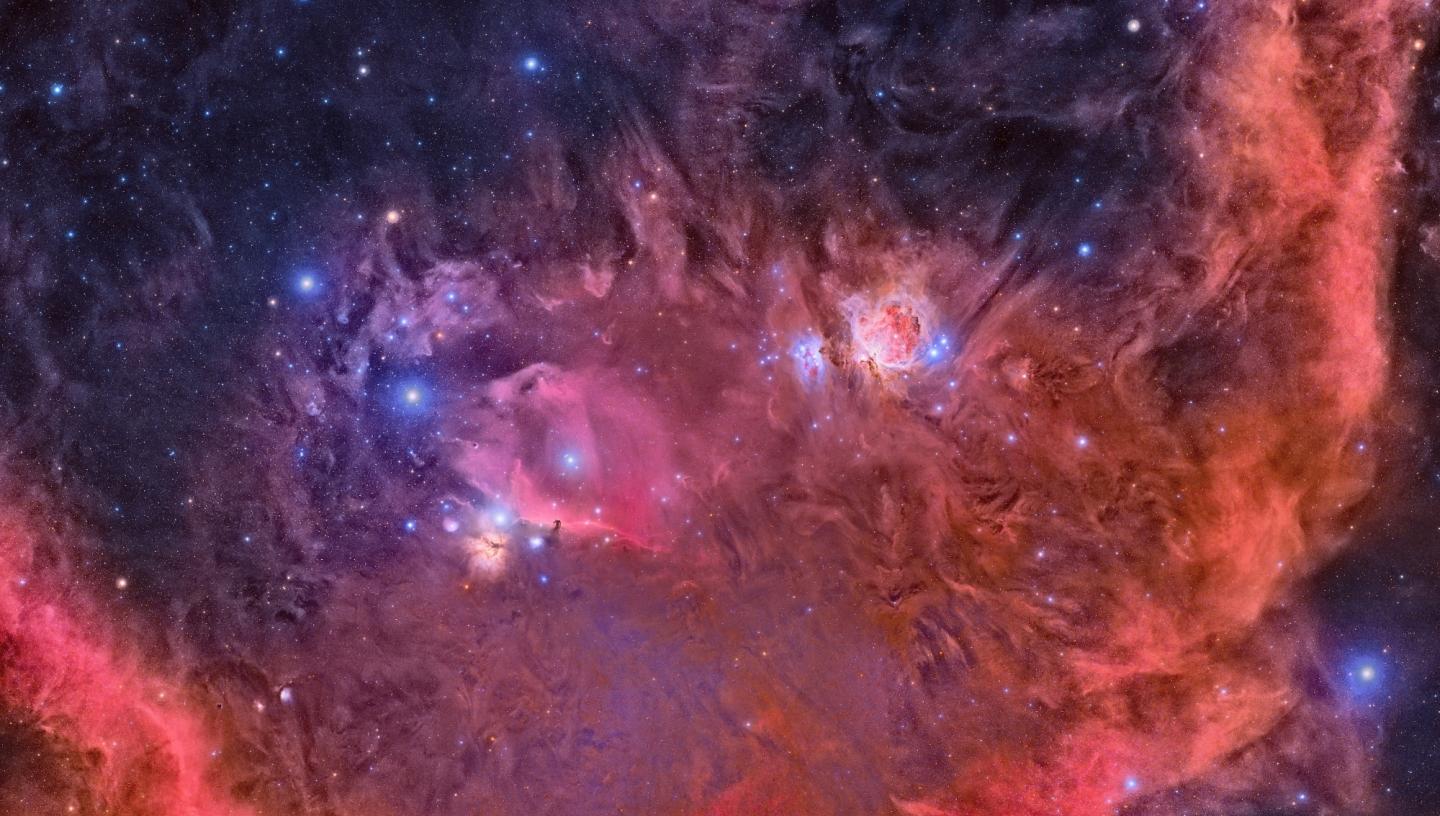
Discover what to see in the night sky in July 2020, including the planets Jupiter and Saturn.
By Patricia Skelton, Astronomy Education Officer
(Details given are for London and may vary for other parts of the UK)
Top 3 things to see in the night sky in July:
- 5 July: See the full moon in conjunction with Jupiter.
- 14 July: Jupiter reaches opposition on this day and will shine brightly in the south.
- 28/29 July: Keep your eyes open for some meteors - it's the peak of the Delta Aquariids meteor shower
Look Up! Podcast
Subscribe and listen to the Royal Observatory Greenwich's podcast - Look Up! As well as taking you through what to see in the night sky each month, Royal Observatory Greenwich astronomers pick a topic to talk about. For July they're talking about the discovery of the heaviest known neutron star. Or is it the lightest known black hole? Have a listen below, then cast your vote on our Twitter poll (@ROGAstronomers) during the first week of the month.
Our podcast is available on iTunes and SoundCloud
Astronomy in July 2020: key events and what to see
5 July: the full moon and Jupiter
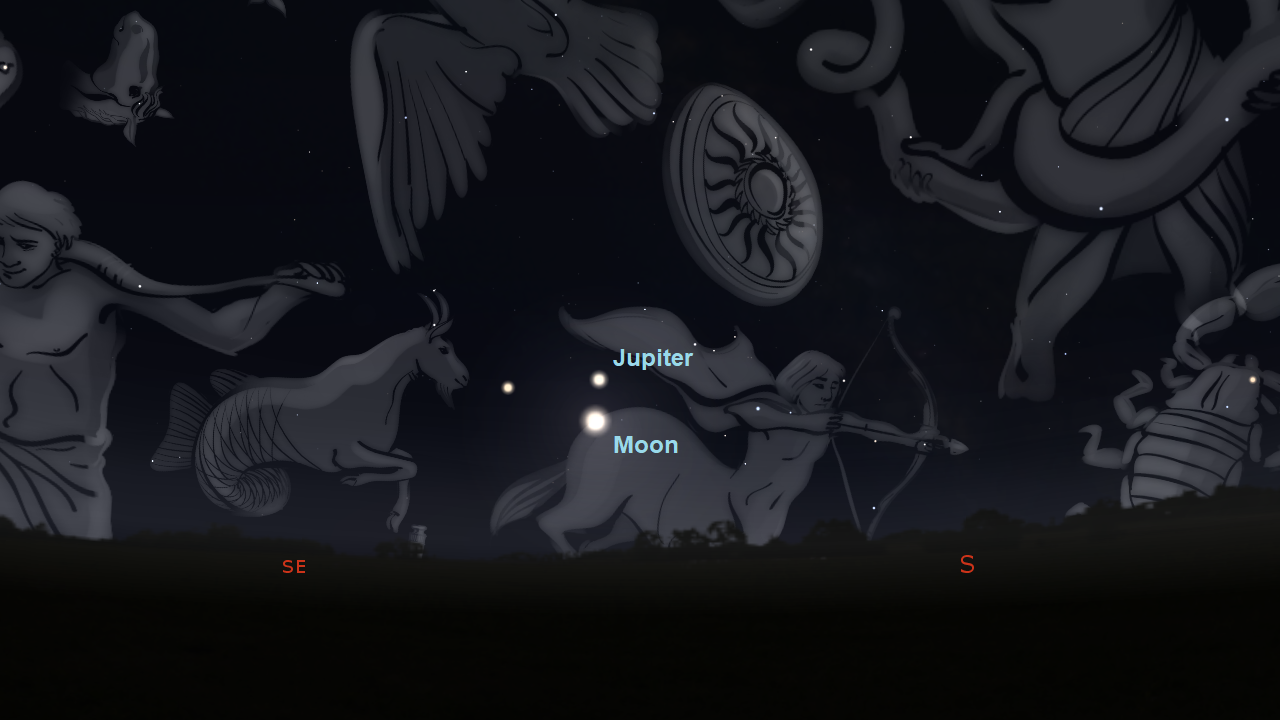
The full moon this month falls on the early morning of 5 July. Wait until that evening and you’ll see it in conjunction with Jupiter when it rises above the south-eastern horizon shortly before 11pm. A conjunction is an apparent meeting or passing of two or more celestial bodies and because Saturn is in close proximity too, by the time these two planets and the Moon set in the southwest the following morning, the Moon will be approaching its conjunction with Saturn which unfortunately occurs just after they’ve dipped below the horizon.
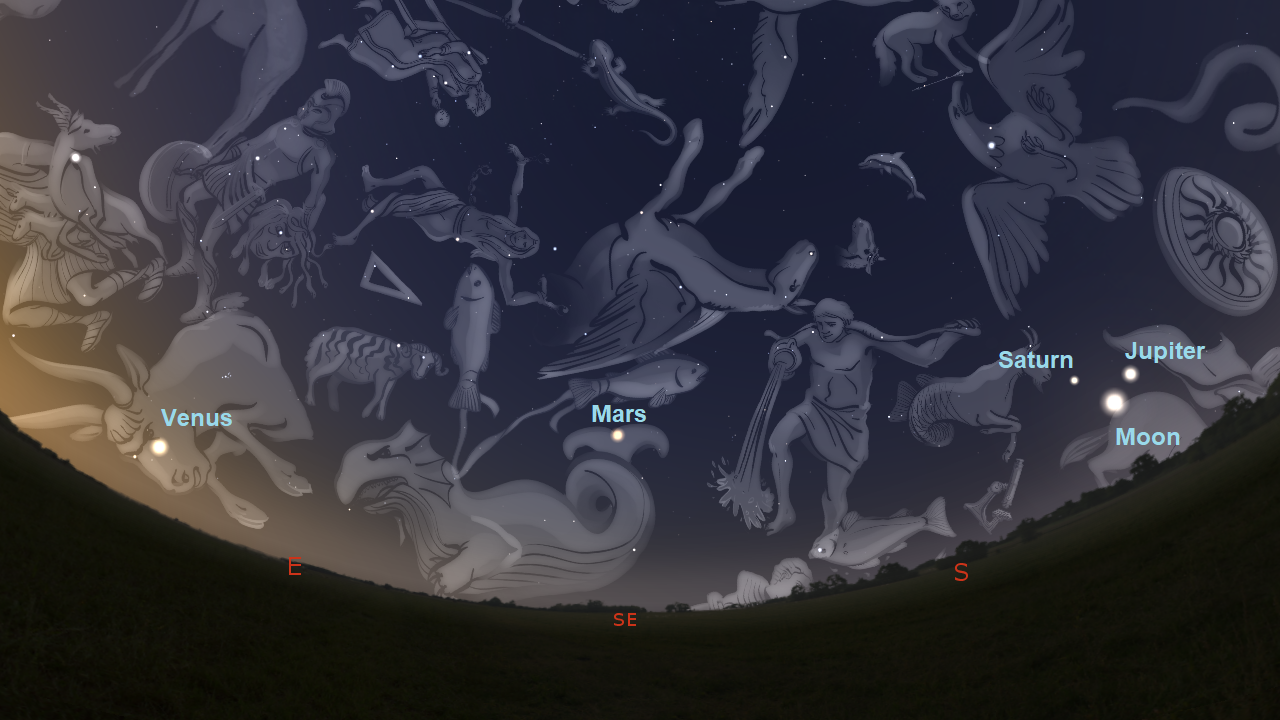
The predawn sky will showcase a planetary buffet with the Moon, Jupiter and Saturn in the south-west, Mars in the south-east, Uranus in the east and Venus beginning to rise over the eastern horizon too and all but Uranus will be visible to the naked eye!
12 July: Mars
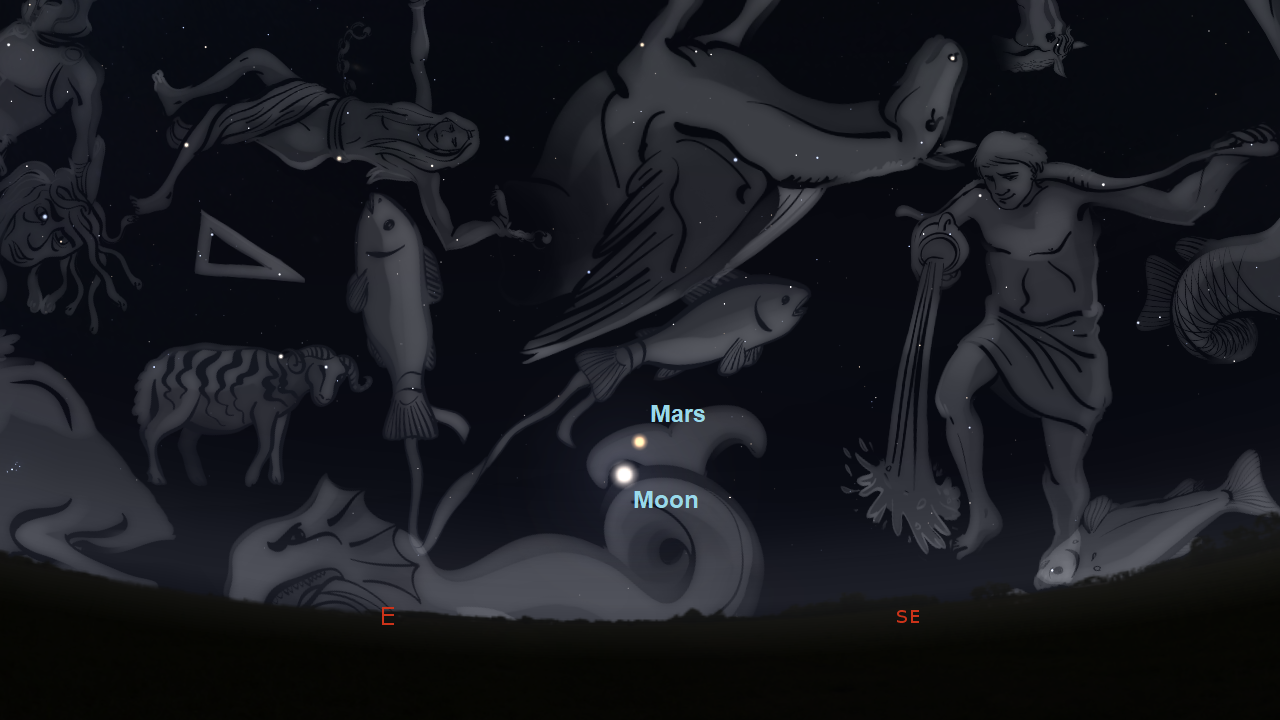
Catch Mars close to the waning gibbous moon from the hours after midnight on 12 July when they rise in the southeast. A few hours earlier, the Moon would have been in conjunction with the red planet (making their closest approach whilst below the horizon) but they’ll still be close together and are a great duo to spot before the sun rises.
Roughly every 26 months the positions of Mars and Earth in their respective orbits brings them into a favourable alignment that provides the best window of opportunity to send spacecraft to our planetary companion. No surprise then, that there are a few spacecraft planned to be launch this July during this advantageous period. On 14 July, the United Arab Emirates plans to launch its first ever Mars orbiter in its Hope Mars Mission. If all goes to plan, it will launch from the Tanegashima Space Centre in Japan at 9:51pm BST – UK time. And just a few days later on 17 July NASA’s Mars 2020 rover is due to launch from Cape Canaveral in Florida at 2:10pm BST – UK time. Scheduled in the same launch window (July into early August) but with no precise date announced yet, China also plans to launch its Tainwen 1 mission – an orbiter and small rover to land on Mars which would make China only the second country to successfully land a probe on Mars after the United States.
Mid-month: Jupiter and Saturn reach opposition
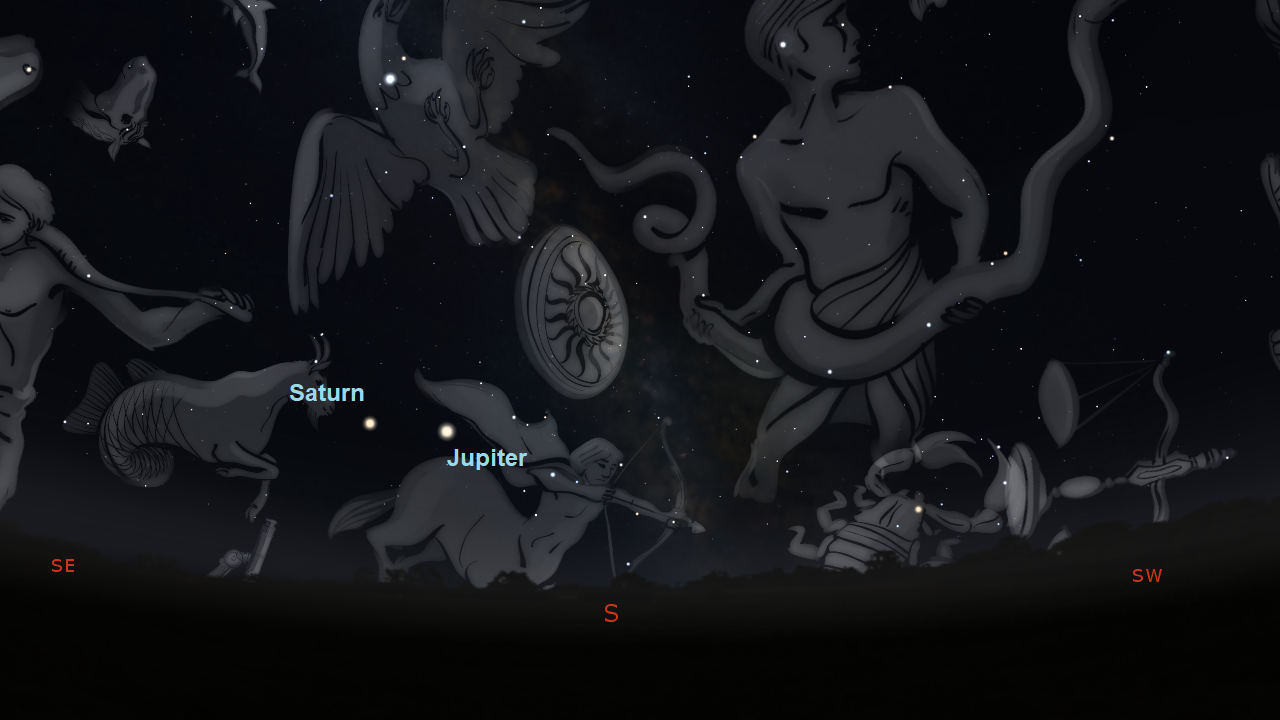
Around the middle of the month both Jupiter and Saturn reach opposition on the 14 July and 20 July respectively. At these times, each planet will on the opposite side of the Earth compared to the sun (configured in an approximately straight line). This means the planets will be roughly at their closest distance to the Earth and so will appear slightly larger and brighter making it the best time to spot them. Look to the south around midnight throughout this period – it’ll be a dazzling sight for naked eye observation but a treat through a telescope too. Do be sure to get to a clear sight without tall buildings or trees as they’ll block your view of the planets which won’t be very far above the horizon.
17 July: Venus the 'Morning Star'
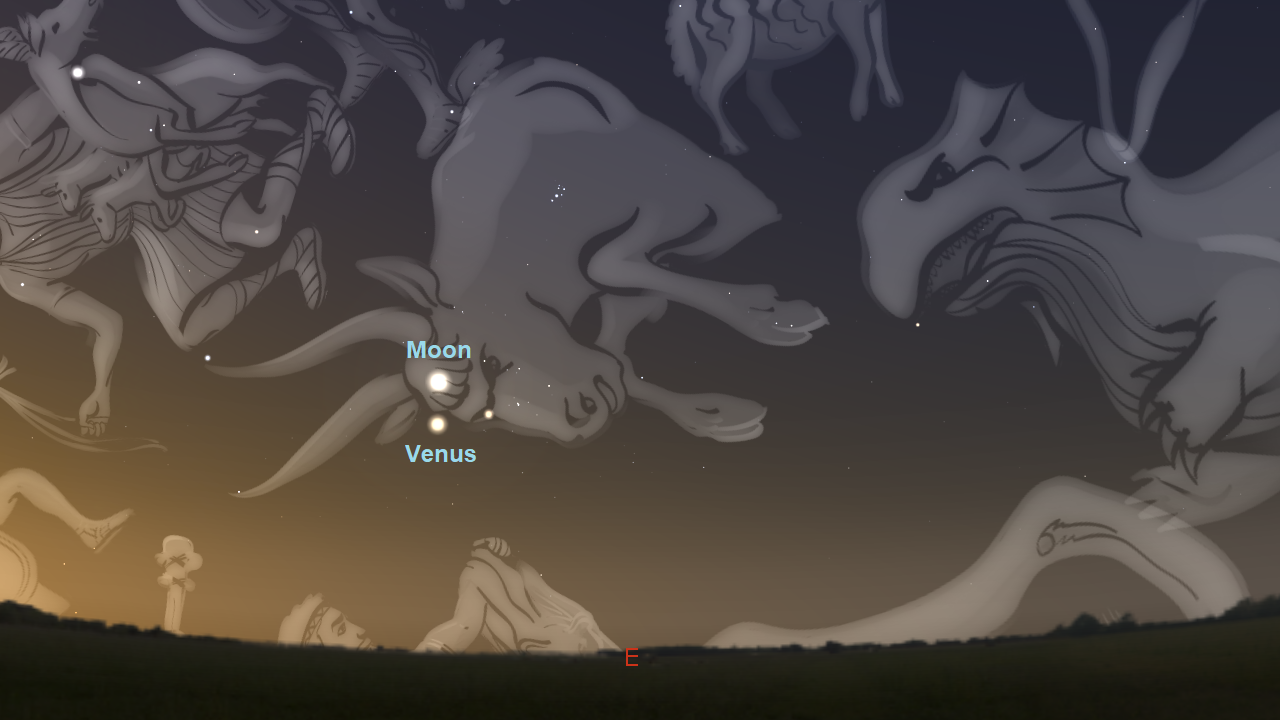
Having reached inferior conjunction in early June, Venus has moved from being visible in the western sky just after sunset to now being a prominent ‘morning star’ as it’s referred to in the eastern sky instead. It will be visible throughout the month and become easier to spot as it climbs further above the horizon throughout July. On the 17 July, the waning crescent moon will be in conjunction with Venus shortly after the sun rises, so look for the pair above the eastern horizon before dawn with the red giant star Aldebaran close by too.
22 July: Mercury reaches greatest western elongation
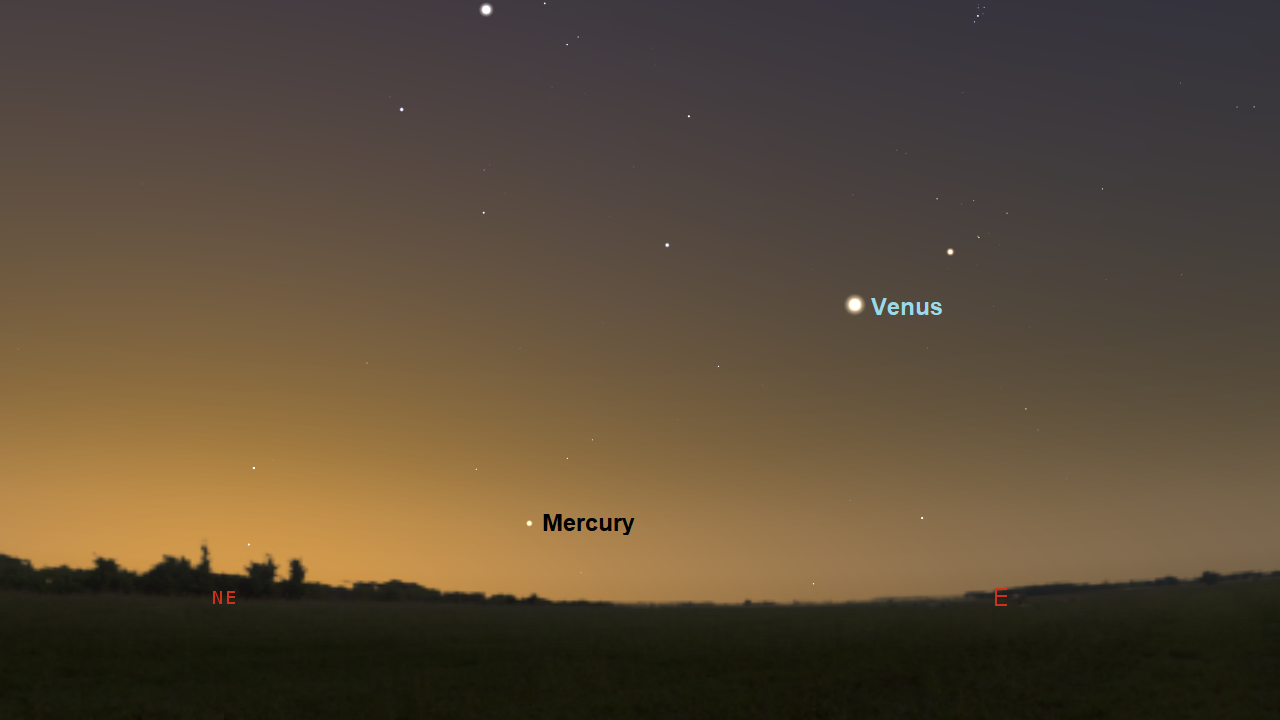
In early June, Mercury reached greatest eastern elongation making it a prime time to look for the solar system’s smallest planet. On 22 July, Mercury will reach greatest western elongation – appearing furthest west of the sun in its orbit from our Earth-bound view. But once again, this will provide a great opportunity to spot it so look to the east before the sun rises, Mercury will be closer to the horizon and slightly further to the north east compared to the bright point of Venus.
28/29 July: peak of the Delta Aquariids meteor shower
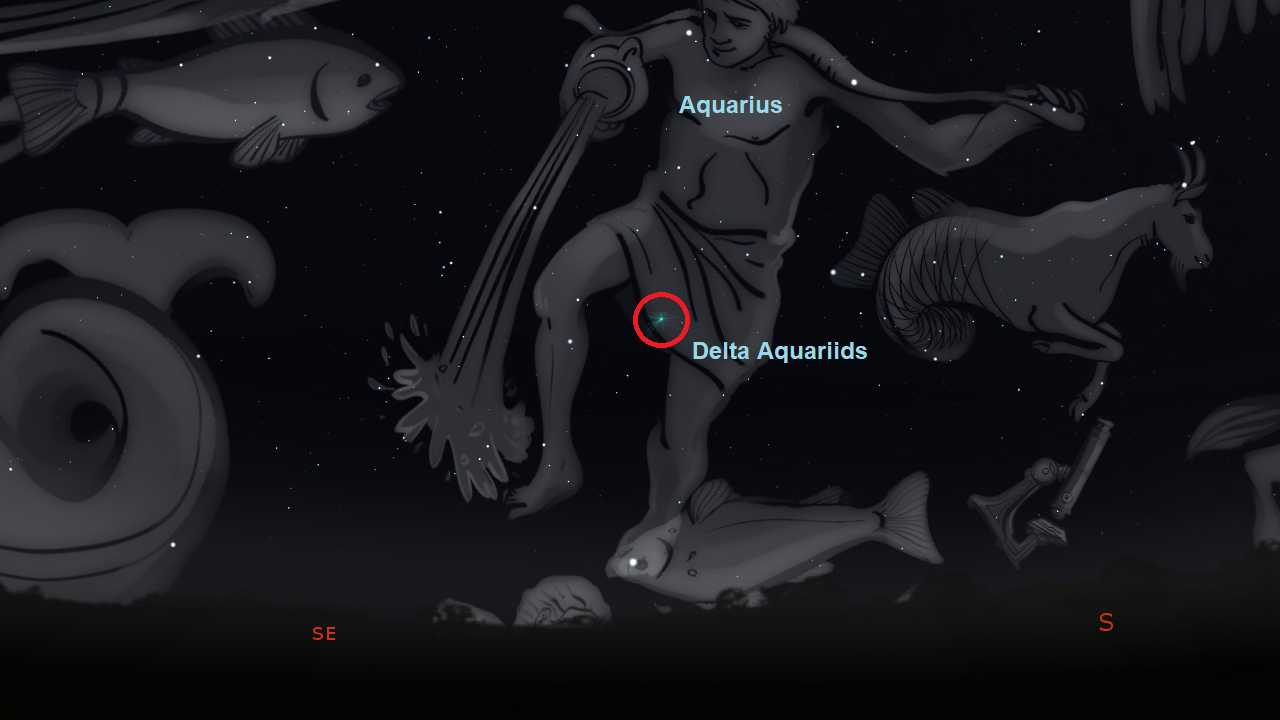
Toward the end of the month, we’re treated to the annual Delta Aquariids meteor shower which will reach its peak on the night of the 28 July and early morning of the 29 July. It’s named as such because the trail of dust (suspected to originate from comet 96P/Machholz) that the Earth ploughs through in its orbit every year, appears to emanate from the constellation of Aquarius to produce the meteors in this shower. It’s not a very strong shower with a meteor count of 20 meteors per hour but the waxing gibbous moon will set shortly after midnight which will leave you with darker skies to spot the meteors in the early morning when the radiant will be at it highest. Face south and scan the skies using just your eyes. Remember to be patient and wrap up warm, the nights can get chilly even in the summer!
The Moon's phases this month
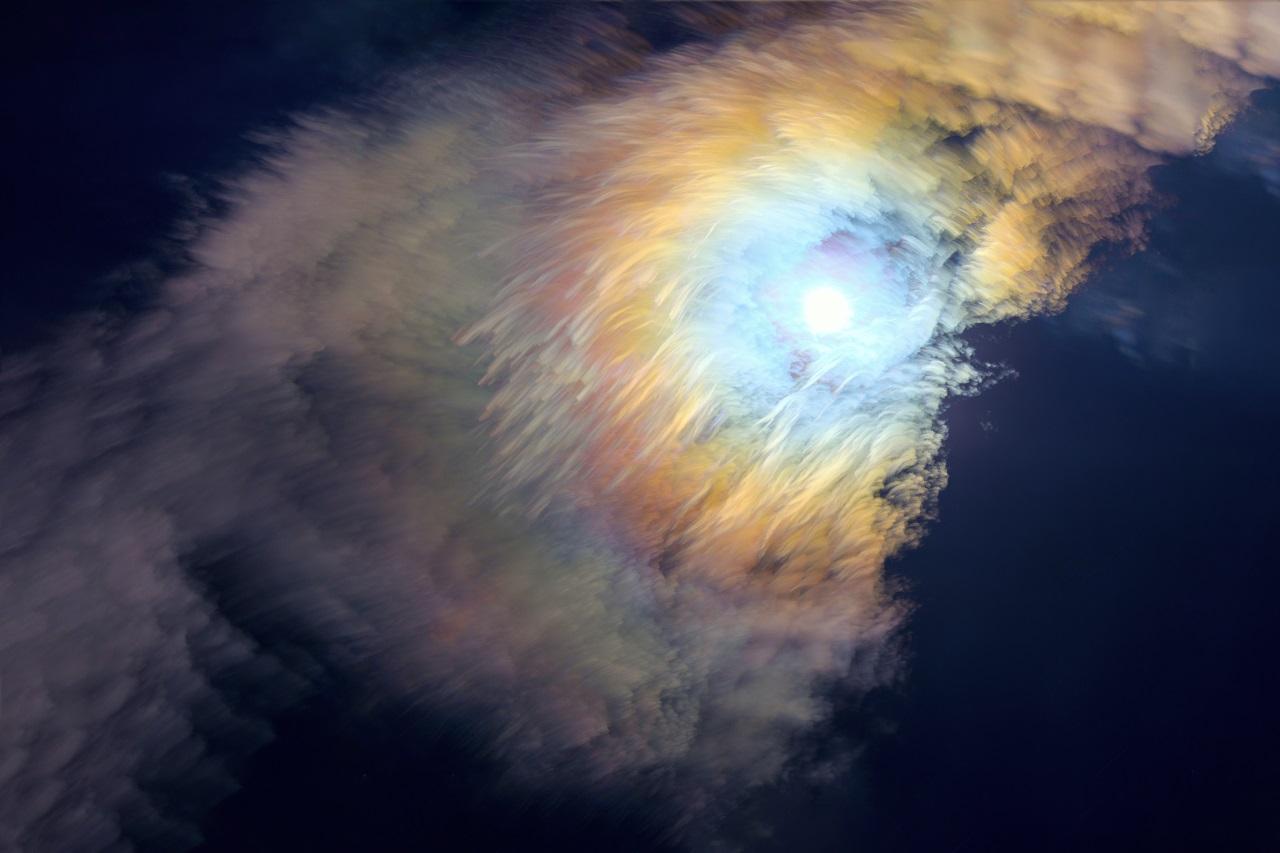
- 5 July: full moon (5:44am)
- 13 July: last quarter moon (12:29am)
- 20 July: new moon (6:33pm)
- 27 July: first quarter moon (1:33pm)
Stargazing Tips
- When looking at faint objects such as stars, nebulae, the Milky Way and other galaxies it is important to allow your eyes to adapt to the dark – so that you can achieve better night vision.
- Allow 15 minutes for your eyes to become sensitive in the dark and remember not to look at your mobile phone or any other bright device when stargazing.
- If you're using a star app on your phone, switch on the red night vision mode.
- Need a stargazing telescope or binoculars? Check out our range of high quality observing equipment recommended by Royal Observatory Greenwich astronomers.
Share your astronomy pictures
This month's banner image is one of the winning images, 'Orion © Raul Villaverde Fraile', of the Insight Investment Astronomy Photographer of the Year competition.
Would you like the chance to have your image of the night sky used for our banner image? If so, share your photos via our Royal Observatory Astrophotography Facebook group
You can also connect with us on Twitter: @ROGAstronomers
Solar System Discovery - Online Planetarium Show
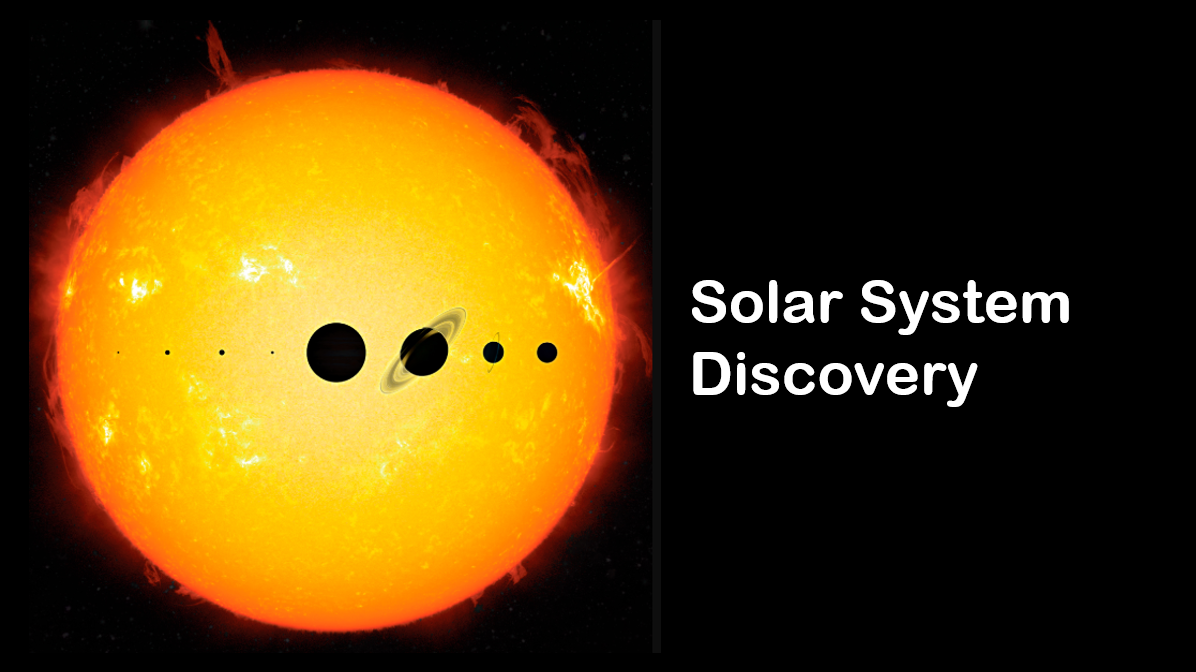
Join us for Solar System Discovery, a live online planetarium show presented by an astronomer from the Royal Observatory Greenwich. The Universe is a vast and intriguing place, and this show explores our own little corner of it: the Solar System. Starting from our home planet, the Earth, we’ll travel through our celestial neighbourhood, visiting objects like planets, moons and asteroids, and ending with a fly-out to view our galaxy, the Milky Way. Find out more
Observatory Online
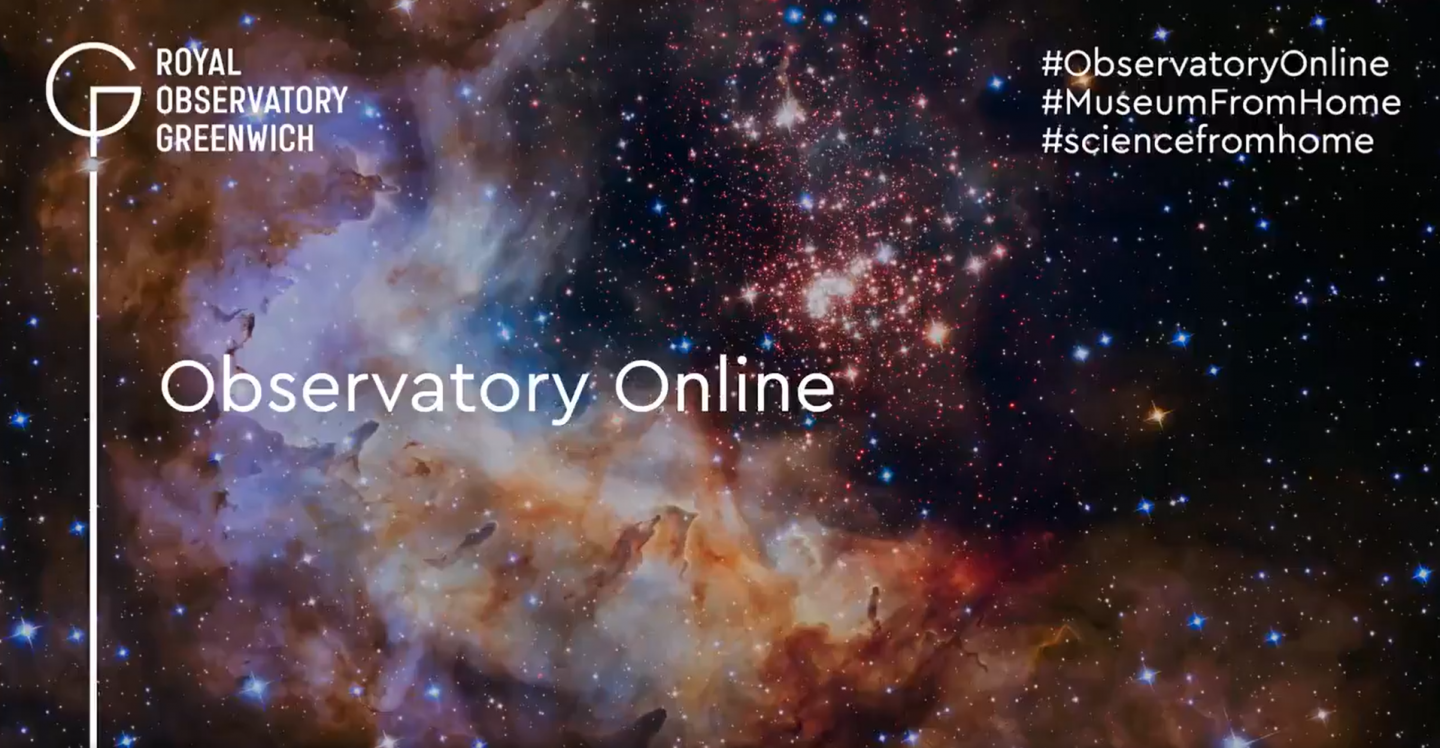
The museum may be closed but our Royal Observatory Greenwich astronomers are still hard at work. In our new Observatory Online sessions, we will answer your questions about Astronomy. Simply tweet your question to our twitter account, @ROGAstronomers, and we will do our best to answer them. Be sure to add #ObservatoryOnline, #Museumfromhome and #sciencefromhome to your tweet!
Resources for teachers and students
The Royal Observatory Greenwich's learning team has also created
- Free animated videos that answer the biggest questions in astronomy and free resources to go alongside them.
- A whole host of podcasts featuring interviews with real space scientists, astronauts and active researchers working in UK universities.
- A 'Learning at home' hub which contains a suite of resources for you to use at home and it even has an 'Ask the Astronomer' facility.
